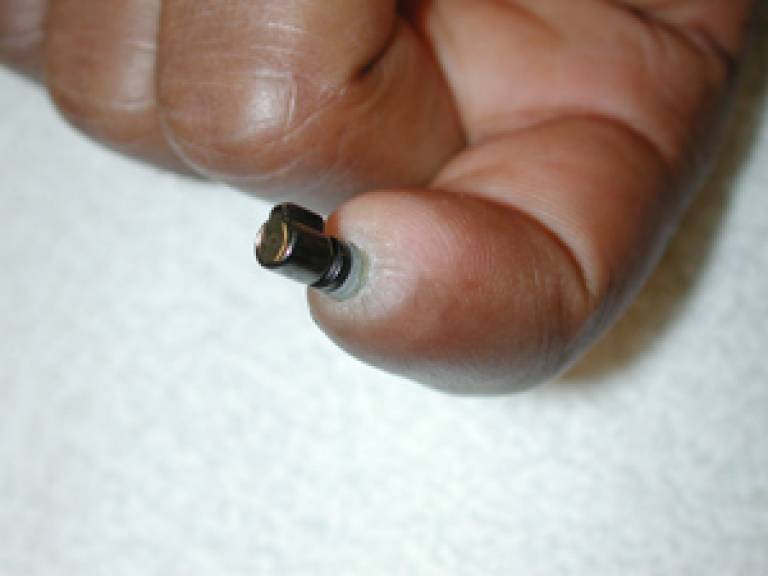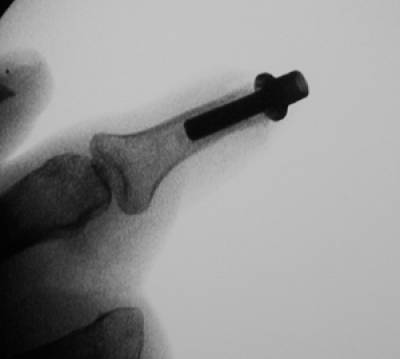Deer antler research leads to new prosthetic possibilities
4 July 2006
A revolutionary technique for the attachment of prosthetic limbs and fingers is being developed by a team of UCL scientists headed by Professor Gordon Blunn.
 Part of the UCL Institute of Orthopaedics and Musculoskeletal Science, the UCL Centre for Biomedical Engineering has developed an Intraosteous Transcutaneous Amputation Prosthesis (ITAP) - a means of attaching a metal implant to bone so that it sticks out through the skin and can have prosthetic attachments added.
Part of the UCL Institute of Orthopaedics and Musculoskeletal Science, the UCL Centre for Biomedical Engineering has developed an Intraosteous Transcutaneous Amputation Prosthesis (ITAP) - a means of attaching a metal implant to bone so that it sticks out through the skin and can have prosthetic attachments added. Up to now, having an implant that breaks the skin would have left the patient susceptible to infection, but the new method enables the skin to form a seal around the implant, protecting it from infection. The scientific breakthrough came as a result of work by Catherine Pendegrass, who looked at how skin moulds around deer's antlers for her doctoral thesis.
Dr Pendegrass said: "By looking at the way the soft tissues attach to deer antlers and using them as natural analogues for ITAP, we have been able to artificially mimic the morphology of the bone that penetrates the skin. This has enabled us to successfully develop an implant to which amputees' soft tissues can attach without infection." Her work has been published in 'Biomaterials' and will feature in a forthcoming edition of the 'Journal of Anatomy'.

Attaching a prosthetic limb directly to bone without infection will mean that prosthetics are much more comfortable, and will save on some of the costs associated with traditional prosthetics, such as replacement sockets, repeated fittings and treatments for infections and pressure sores.
An ongoing clinical trial of the technology is bearing promising results. It is due to continue for a further two years, during which time all patients will receive thorough follow-up work, including assessments of their condition, as measured by tests for picking up objects, grip strength, the condition of the implant and the 'skin interface'.
Professor Blunn, Head of the Centre for Biomedical Engineering, said: "The patients who have received implants so far are doing very well."
Because of the psychological impact of the loss of a limb or digit, the trial's ethical criteria require that at least 12 months have passed since amputation for all participants. Some of the survivors of last year's July 7 bombings who lost limbs in the attacks have expressed interest in the work, and it is hoped that, in time, the technology under development will be able to help them.
The new technology is manufactured by Stanmore Implants Worldwide, the commercial wing of the UCL Centre for Biomedical Engineering. Its managing director, Paul Unwin, believes that the implants may lead the way to 'bionic prostheses', which could be fully powered limbs operating under the control of the patient's own nervous system. He said: "ITAP is a great example of a translational research partnership between a small innovative company and a world-leading UK university. The initial programme has been highly successful and if it continues, this success may provide the nucleus of a new company to fully exploit the technology."
Image 1: The ITAP implant protrudes through the end of a patient's finger
Image 2: An X-ray of the ITAP
 Close
Close

